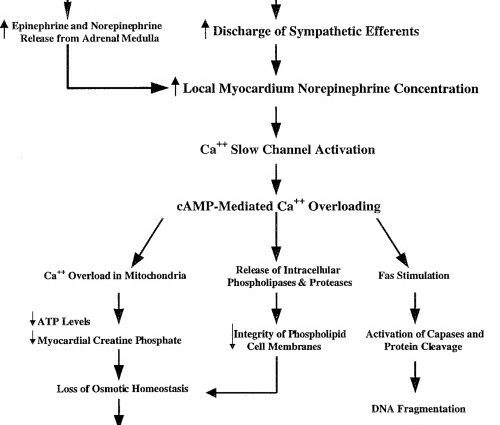Contents
Catecholamines: definition, role and analysis
Naturally produced by the body, catecholamines are hormones released into the bloodstream in the presence of psychological or physical stress. Definition, role and function of these substances.
How to define catecholamines?
Made by the adrenal glands, catecholamines are organic compounds synthesized from tyrosine that act as a hormone or neurotransmitter.
They are produced by the nervous system during emotional or physical shock, where they regulate blood pressure and cardiac output so that the individual can have an appropriate response to a potential danger that presents itself and act through it. sympathetic receptors.
The most well-known catecholamines are adrenaline (epinephrine), norepinephrine (norepinephrine) and dopamine:
- Adrenaline acts as a neurotransmitter in the central nervous system and as a hormone in the bloodstream;
- Norepinephrine is primarily a neurotransmitter of the peripheral sympathetic nervous system, but is found in the blood;
- Dopamine is an essential neurotransmitter in the motivation and reward system.
When their mission is accomplished, catecholamines become inactive elements.
Why is the level of catecholamines changing?
Stress increases the level of catecholamines in the blood. During physical activity, an attack on the body, they are released into the blood inducing physiological changes in the body:
- constriction of vessels;
- increased heart rate;
- blood pressure;
- the level of glucose in the blood.
Pathologies linked to catecholamines
Epinephrine and norepinephrine are most often taken when screening for pheochromocytoma or neuroblastoma and in people with high blood pressure.
- Pheochromocytoma is a usually benign tumor of part of the adrenal glands. Excess catecholamines in the blood can cause high blood pressure and heart rhythm disturbances;
- A neuroblastoma is a malignant tumor that has the particularity of developing at the level of neuroblasts, which are immature nerve cells of the sympathetic nervous system.
What treatment in case of catecholamines?
As part of the treatment of the various types of shock characterized by a drop in blood pressure, catecholamines are mainly used intravenously, but also:
- the catecholamines can be similar to those which are secreted naturally by the body, or be a synthetic product;
- DOPA, a precursor of dopamine which can, unlike dopamine, cross the blood-brain barrier, and thus be used in the treatment of Parkinson’s disease by increasing the level of dopamine;
- dopamine, in small doses, allows a dilation of certain arteries comprising receptors for this molecule;
- dobutamine is used to improve the contraction of the heart muscle;
- adrenaline is used primarily during the treatment of cardiac arrest or, in small doses, during anaphylactic shock;
- noradrenaline is a potent vasoconstrictor and affects the heart rate much less than adrenaline;
- isoproterenol stimulates β-adrenergic receptors and causes a marked increase in heart rate and power.
We must also mention the important part of adrenaline and norepinephrine in the examination of lipolysis in newborns.
Diagnostic
The level of catecholamine alone cannot lead to an obvious diagnosis.
In screening for pheochromocytoma, neuroblastoma, and in people with high blood pressure, adrenaline and norepinephrine are most often assessed.
Their concentrations can be measured:
- in the blood plasma, by means of a venipuncture made in the crease of the elbow. After 20 minutes of strict rest, the sample should be taken;
- in urine: the test should be performed over 24 hours and, if possible, during or after a period of hypertension.
However, pheochromocytomas, neuroblastomas and so-called “encrine” tumors produce large amounts of catecholamines in the blood and urine. Catecholamines thus form a tumor marker for this type of cancer. Their dosage is generally linked to that of metanephrines and vanylmandelic acid (VMA).
On the other hand, an increase in dopamine and vanylmandelic acid, without an increase in norepinephrine, will lead to the diagnosis of neuroblastoma.










